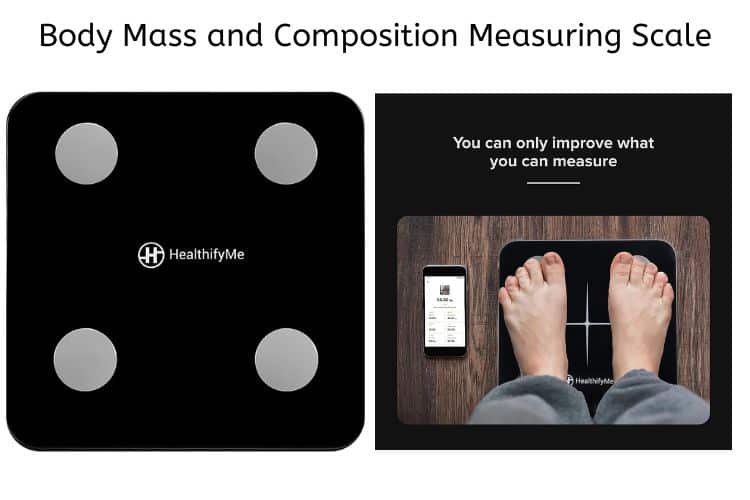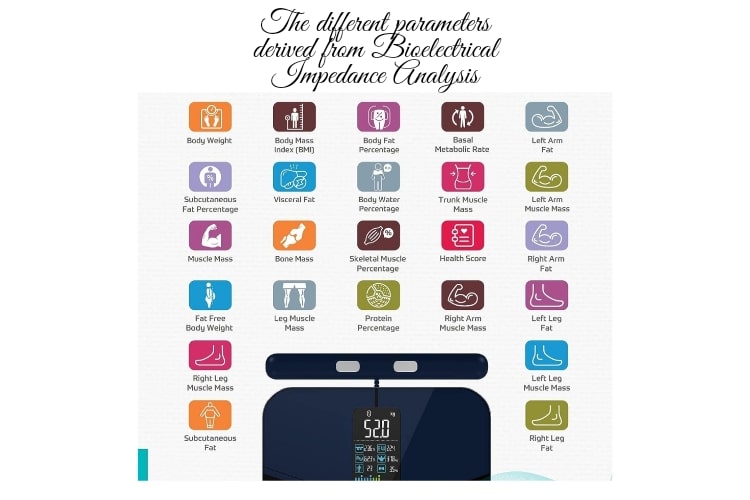Table of Contents
What is Bioelectrical Impedance Analysis( BIA)?

How does bioelectrical impedance analysis BIA work?
Bioelectrical impedance analysis (BIA) is a method for estimating body composition, particularly body fat and muscle mass.
A Bioelectrical Impedance Analysis (BIA) machine measures various parameters of the body through the use of low-level electrical currents. These impulses are sent through the body via electrodes, typically placed on the hands and feet.
The BIA machine then analyzes the speed and resistance of the electrical flow to estimate body composition, such as body fat percentage, muscle mass, and hydration levels.
By measuring the impedance, or opposition to the electrical current, the BIA machine can determine the amount of water in the body.
Since water conducts electricity well, a higher percentage of body water is associated with lower impedance. Fat, on the other hand, acts as an insulator and has higher impedance.
BIA machines use algorithms to calculate body composition based on the data obtained from the electrical currents.
These algorithms take into account factors such as age, height, weight, and gender to provide accurate estimates. However, it’s important to note that BIA machines may have some limitations and can be influenced by factors like hydration status, body temperature, and the presence of certain medical conditions.
Overall, BIA machines offer a non-invasive and relatively quick method for assessing body composition. They can provide valuable information to individuals and healthcare professionals in monitoring and managing health and fitness goals.
BIA machines offer a non-invasive and quick method for assessing body composition, providing valuable information for health and fitness goals.
It works by passing a weak electric current through the body and measuring the voltage to calculate the impedance (resistance and reactance) of the body. The method has become popular due to its ease of use and portability of the equipment.
The electrical impedance measured by BIA can be used to estimate total body water (TBW), which can then be used to estimate fat-free body mass and, by difference with body weight, body fat.
However, it is the 4-compartment model (4C) that is regarded as the reference method in body composition analysis, not BIA.
How to use a Bioelectrical Impedance Analysis tool
Bioelectrical impedance analysis (BIA) is a widely used method for assessing body composition and determining factors such as fat mass, lean body mass, and hydration levels.
BIA machines are commonly found in fitness centers, hospitals, and clinics, and can be used by trained professionals to gather valuable information about an individual’s health and fitness levels. To properly use a BIA machine, there are several steps that need to be followed.
Firstly, it is important to ensure that the individual being tested is properly prepared. This includes avoiding exercise, eating, and drinking for at least four hours prior to the test. Additionally, it is important for the person to remove any metal objects such as jewelry or watches, as these can interfere with the accuracy of the BIA machine.
Once the individual is prepared, they should be positioned on the BIA machine in a comfortable and relaxed manner. The machine typically consists of footplates or hand-held electrodes, which transmit a small electrical current through the body. These electrodes are placed on the bare skin of the individual, with one on each hand and foot.
Next, the BIA machine is activated, and the individual must remain still during the testing process. The machine will send a low-level electrical current through the body, which travels at different speeds through fat, muscle, and water. The resistance encountered by the current is then used to calculate body composition.
After a few seconds, the BIA machine will display the results. These may include measurements such as body fat percentage, muscle mass, and total body water. It is important to note that BIA machines provide estimates rather than precise measurements, and factors such as hydration levels can affect the accuracy of the results.
Finally, it is important for the individual and the professional administering the test to interpret the results in context.
What does a BIA test tell you?
BIA machines can provide valuable information about an individual’s body composition and overall health, but it is essential to consider other factors such as age, sex, and activity level when interpreting the results.

In conclusion, using a bioelectrical impedance analysis (BIA) machine can provide valuable insights into an individual’s body composition and overall health.
By following proper preparation techniques and positioning on the machine, accurate results can be obtained. However, it is important to remember that BIA machines provide estimates rather than precise measurements and should be interpreted in context with other factors. Overall, BIA machines are a useful tool for assessing body composition and monitoring progress in fitness and health goals.
Do’s and don’ts while measuring Bioelectrical impedance analysis(BIA)
Although BIA is straightforward to use, careful attention to the method of use should be given. Simple devices to estimate body fat, often using BIA, are available to consumers as body fat meters. These instruments are generally regarded as being less accurate than those used clinically or in nutritional and medical practice.
Disadvantages of using Bioelectrical impedance analysis (BIA) instrument
Dehydration is a recognized factor affecting BIA measurements as it causes an increase in the body’s electrical resistance, so it has been measured to cause a 5 kg underestimation of fat-free mass, i.e., an overestimation of body fat.
Body fat measurements are lower when taken shortly after consumption of a meal, causing a variation between the highest and lowest readings of body fat percentage taken throughout the day of up to 4.2% of body fat.
Moderate exercise before BIA measurements leads to an overestimation of fat-free mass and an underestimation of body fat percentage due to reduced impedance. Therefore, it is recommended not to perform BIA for several hours after moderate or high-intensity exercise.
Useful Reference-
Hope this article has provided sufficient knowledge on BIA machine and its functions.
Disclosure
This article contains affiliate links to Amazon, meaning, if you, reader, make a purchase using the link, this site receives a small commission that helps to maintain this website, without any extra charge to the purchaser.
Adios.

